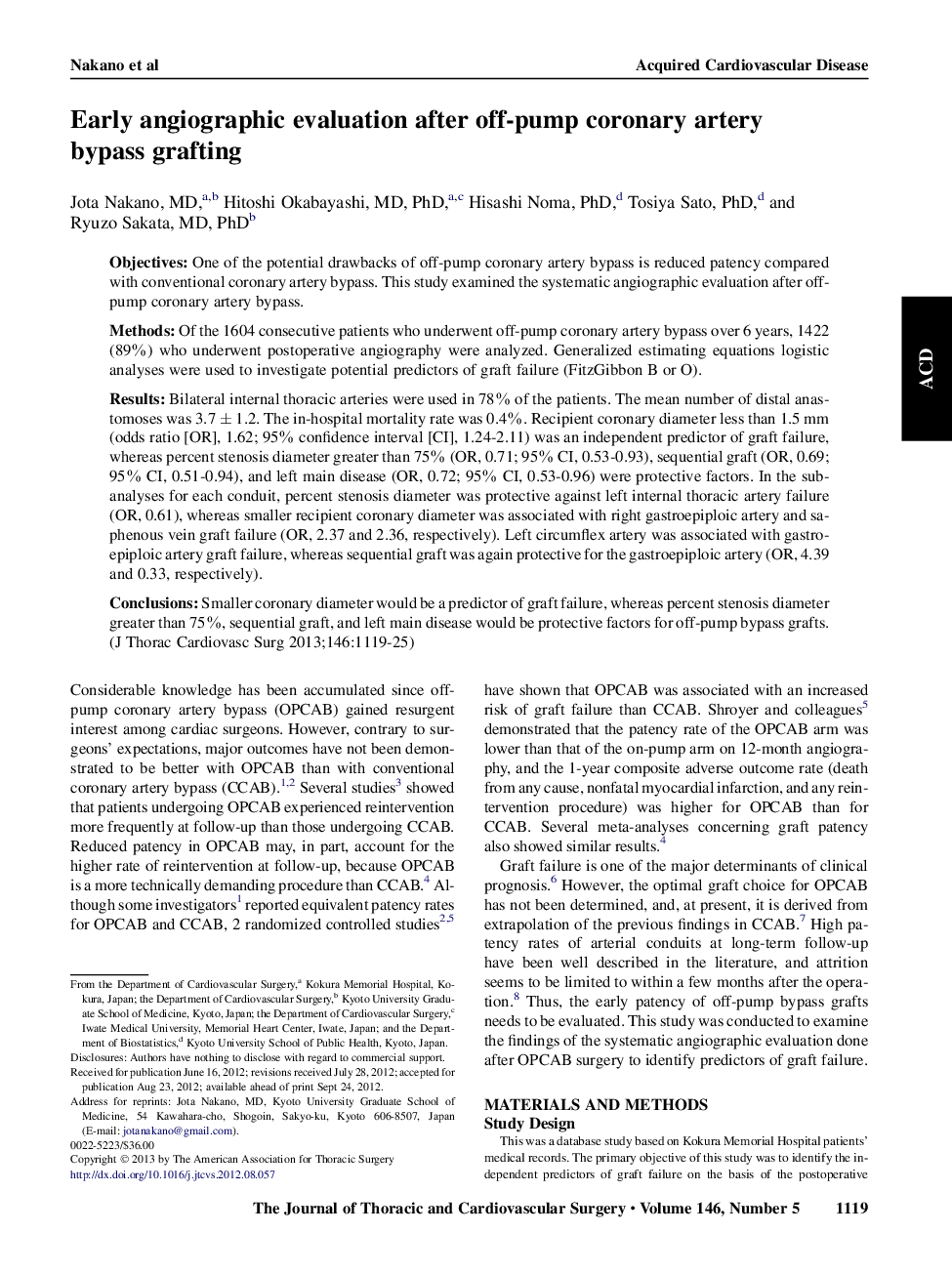| Article ID | Journal | Published Year | Pages | File Type |
|---|---|---|---|---|
| 2979835 | The Journal of Thoracic and Cardiovascular Surgery | 2013 | 7 Pages |
ObjectivesOne of the potential drawbacks of off-pump coronary artery bypass is reduced patency compared with conventional coronary artery bypass. This study examined the systematic angiographic evaluation after off-pump coronary artery bypass.MethodsOf the 1604 consecutive patients who underwent off-pump coronary artery bypass over 6 years, 1422 (89%) who underwent postoperative angiography were analyzed. Generalized estimating equations logistic analyses were used to investigate potential predictors of graft failure (FitzGibbon B or O).ResultsBilateral internal thoracic arteries were used in 78% of the patients. The mean number of distal anastomoses was 3.7 ± 1.2. The in-hospital mortality rate was 0.4%. Recipient coronary diameter less than 1.5 mm (odds ratio [OR], 1.62; 95% confidence interval [CI], 1.24-2.11) was an independent predictor of graft failure, whereas percent stenosis diameter greater than 75% (OR, 0.71; 95% CI, 0.53-0.93), sequential graft (OR, 0.69; 95% CI, 0.51-0.94), and left main disease (OR, 0.72; 95% CI, 0.53-0.96) were protective factors. In the subanalyses for each conduit, percent stenosis diameter was protective against left internal thoracic artery failure (OR, 0.61), whereas smaller recipient coronary diameter was associated with right gastroepiploic artery and saphenous vein graft failure (OR, 2.37 and 2.36, respectively). Left circumflex artery was associated with gastroepiploic artery graft failure, whereas sequential graft was again protective for the gastroepiploic artery (OR, 4.39 and 0.33, respectively).ConclusionsSmaller coronary diameter would be a predictor of graft failure, whereas percent stenosis diameter greater than 75%, sequential graft, and left main disease would be protective factors for off-pump bypass grafts.
